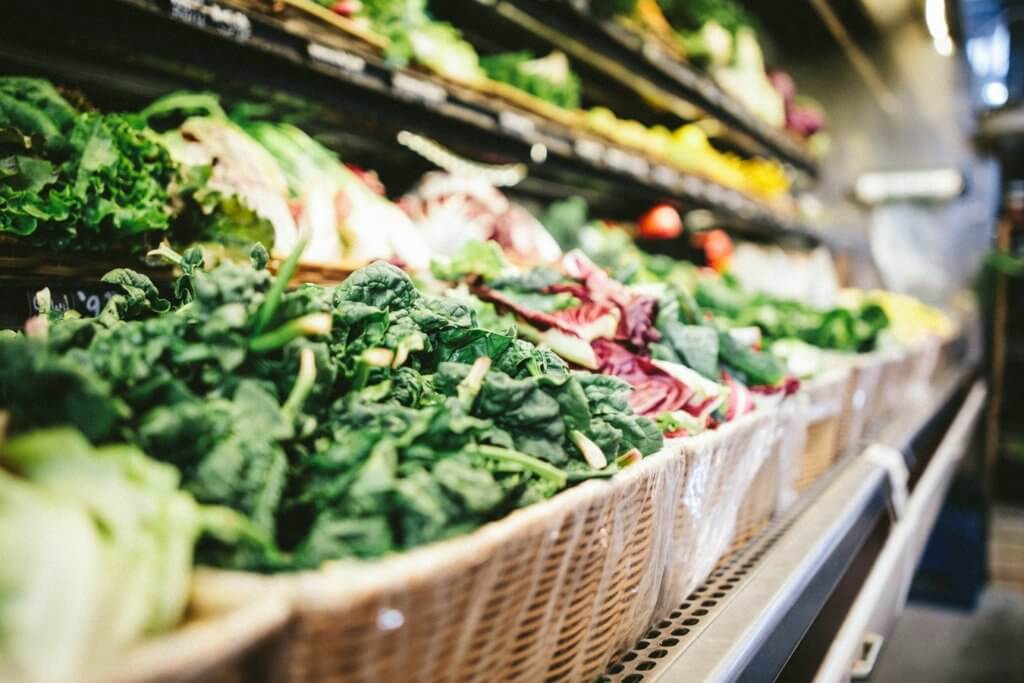Why You Should Be Using a Grocery Delivery (or Pickup) Service

When something is easy to do, can save me time, money, and alleviate a stressful activity all at the same time (like cutting cable / satellite), that thing is a golden intersection of life-hack greatness, and is absolutely something I will do forever.
Online grocery sales are projected to reach $100 billion (yes billion) by 2025, which is just over 5 years as I write this post. This is one of those golden intersections of life-hack greatness.
As technology has evolved in the last few years, the grocery delivery and pickup space has taken full advantage. All major grocery retailers, and even some of the minor ones (Aldi for example, which I now frequently use) now have online ordering capabilities that feature either grocery pickup or grocery delivery, in some manner.
Some of them use independent ordering and fulfillment services to do this, such as Instacart, and some of them do it on their own, such as Walmart. Some use a hybrid model where shoppers are free to choose their own method of fulfillment.
It’s all evolving pretty rapidly as well, so this will likely change a few months after I write this post. Either way, it’s exciting to see.
While all of them offer some type of online ordering, the fees and services vary widely depending on how you choose to get your groceries from the store to your refrigerator.
Let’s take a look at some of the options, and why you should absolutely be taking advantage of this time-saving, money-saving, stress-relieving, super easy life hack.
For the sake of simplicity, we’ll talk about the ones that are the most widely available as I write this post.
Grocery Delivery and Pickup Options
Shipt
Shipt is an independent grocery delivery service that partners with various grocers around the US. Their big brands include Target, and Meijer, as well as many smaller regional favorites.
They mark prices up slightly on the items they deliver, and also charge a delivery depending on the amount you order (sometimes it’s free, but you have to have a paid membership) and a service fee. Shoppers are also paid a tip chosen by the customer.
You can also elect to purchase an annual membership for $99 which gets you access to the service, or $14 a month.
Learn more on the Shipt FAQ. It’s way better than the actual homepage of their website, which offers very little useful information.
Instacart
Instacart is similar to Shipt, but better in my opinion. You’ll see why in a moment. I’ve been using Instacart for the last several months, and it’s amazing. Excellent app. Great service, and a nice selection of grocers.
They also partner with several major brands, including Kroger, Meijer, Costco, and Aldi being the main ones, plus many smaller regional stores.
Instacart works in almost the same way as Shipt, in that they mark up items slightly to create their margins, with a couple of major differences. They don’t require a membership for delivery. You can simply elect to pay for delivery, and they’ll take a small service fee. You can also leave the shopper a tip.
This is nice because you don’t have to worry about activating and cancelling a membership. You can just use them a few times a year if you want to.
They also offer a $99 a year package, which waives the delivery fee and service fee and allows you unlimited use of the service, making this an excellent deal to hop on.
The best thing about Instacart that I’ve found is they partner with Aldi, who is known for extremely low prices (competitive and even less than Walmart in many cases) and high quality food (similar to Trader Joe’s).
The fact that they’ll deliver from Aldi makes the markup pretty easy to stomach. Even with the $99 annual membership, you get high quality groceries for less than the cost of Kroger and Meijer, and far better quality than Walmart will ever offer.
Learn more about Instacart here, and get $10 off your first order.
Walmart
Walmart offers free pickup at most of their locations throughout the US, which is great for their cheaper items like butter, eggs, milk, yogurt, milk, etc. You just have to order over $3o to get this for free, which isn’t too difficult.
They’ve also recently started offering delivery in many states, with a $30 minimum and a $10 fee. I haven’t yet used Walmart delivery, but I hear it’s pretty nice.
Walmart is also a tech leader in retail, so their app is very easy to use and well thought-out. It’s also pretty difficult to beat Walmart prices, so that’s the main attractiveness factor for this option.
Learn more about Walmart delivery here.
Kroger
Kroger is the one major retailer who uses a hybrid model to offer both pickup and delivery. They manage pickup themselves with their ClickList service, but use independent services, like Instacart, for delivery.
To be honest, there’s nothing great about what Kroger offers. Their technology is OK, not great. Their prices aren’t very competitive, and they charge you $5 on top of your order.
Nothing really sets them apart from the others aside from their customer loyalty. Some people will just never shop anywhere else because they don’t want to change.
Learn more about Kroger Clicklist and delivery here.
How Can This Cost Money, But Also Save Money?
So now let’s address why these services can actually save you money, even if they do have a small cost, especially the delivery services.
The first thing people ask when I tell them I have my groceries delivered, is “Wow. How much does that cost?” This is always said in a strange tone, like I drive a Bentley or something (I’m rolling in a 2009 Honda Accord btw).
Yes, there is a small price to this, but it’s not that much. At $99 a year, plus a $5 tip, and a small markup for some items (not all items), Instacart delivery is extremely affordable. I figure it’s around $250 a year or so, depending on freqency of delivery. That’s where most people stop thinking, and this is actually where things get really interesting.
Not having to perform the act of going to the store does a few pretty large things, all of which save money:
- It saves me around 3-4 hours a month (or more)
- It virtually eliminates impulse buying
- It eliminates fuel and car maintenance costs
- It allows very simple control of spending
Opportunity cost is a huge deal. Personally, my time is worth a lot more to me than to spend it fighting crowds and germs in the grocery store. I figure the 3-4 hours I save each month are worth at least $1,000. I can now spend this time with my family, on other projects, or side hustles. This fact alone more than pays for the amount above.
You can make more money, but you can never get back your time.
Retailers are tricky. They know how to get you to buy more stuff. On average, impuse buying accounts for close to $5,000 per year in household spending, much of which is at the grocery store (especially “Superstores” like Walmart and Target that sell everything.)
Being able to tap what you need on your app without retailer tricks messing with your impulse control is very valuable. Also, being able to keep a close watch on exactly how much you are spending is a key as well. You can’t do that at the grocery store.
If you save just 10% on impulse buying, you’ve paid for the cost of delivery with ease.
You also eliminate the gas money, and vehicle maintenance you would otherwise spend driving to the store. And not to mention those door dings by runaway carts and toddlers (and adults) that don’t pay attention.
All of the facts above can account for thousands of dollars per year in the other direction, completely nullifying that small up front cost, and then some. Even for families on the tightest of budgets, this is likely a win.
So… Which Service Should You Use?
Hopefully by now you’re convinced that grocery pickup / delivery is a good financial decision. Which one to choose depends on your preferences and finances.
If you’re on a pretty tight budget, it’s hard to go wrong with Walmart grocery pickup. You still benefit from the reduction of impulse buying, spending control, and you save the time spent inside the grocery store. You also get Walmart’s very low prices. The only thing you don’t get in this case is the reduction in vehicle cost and opportunity cost of your time, which you can work towards over time.
If you have a little bit of flexibility in your budget to free up time for other things, I highly recommend using Instacart paired with Aldi for grocery delivery, with Walmart as a close second. Both have excellent prices and reasonable delivery costs. It’s hard to go wrong with either, although I prefer Instacart / Aldi due to their food quality.
Whichever one you choose, you’re making a huge improvement vs. wasting time and money roaming the aisles of a physical grocery store. The horror!
What to Watch For
As consumers use more and more services geared towards convenience, this space is growing faster than ever.
Look for more competitors in this area with excellent technology. I wouldn’t be surprised to see Amazon grow it’s Amazon Fresh brand to a juggernaut in this space over the next five years.
Also keep an eye out for companies like Uber who already have a massive network of drivers, to do the same.
You’ll likely also see retailers offering these services for cheaper to compete with one another, and enhacing their technology all the same.
Whatever happens, it’ll be great for the consumer, freeing up time, money, and making life easier in a lot of ways.


